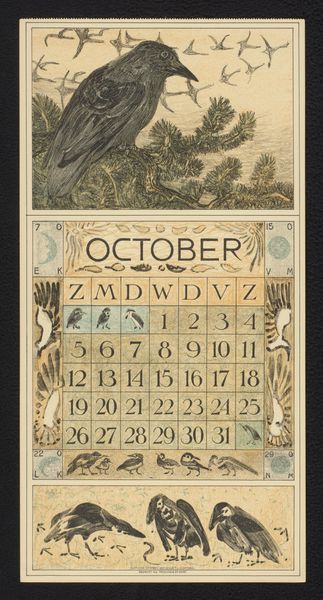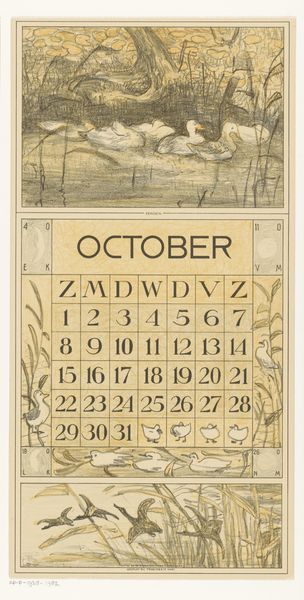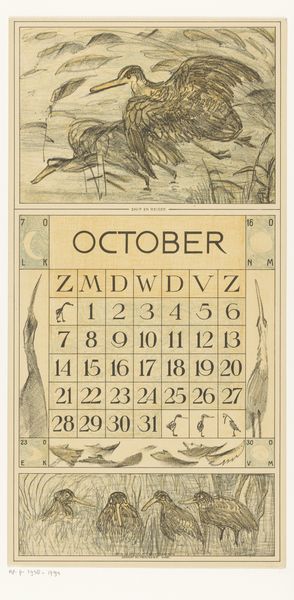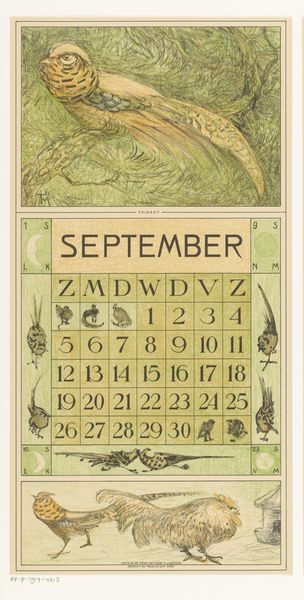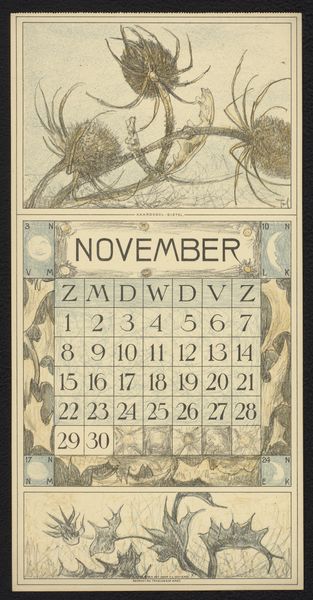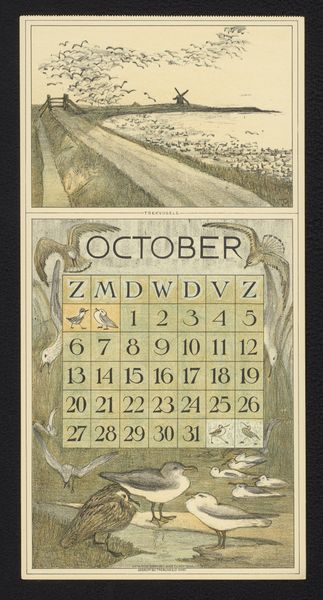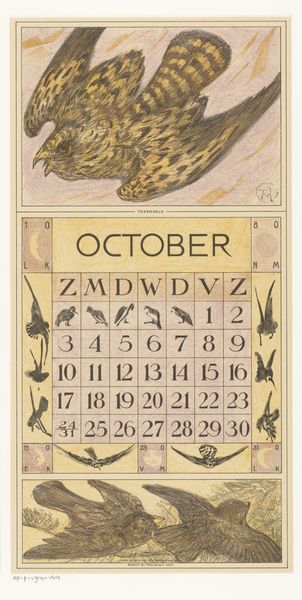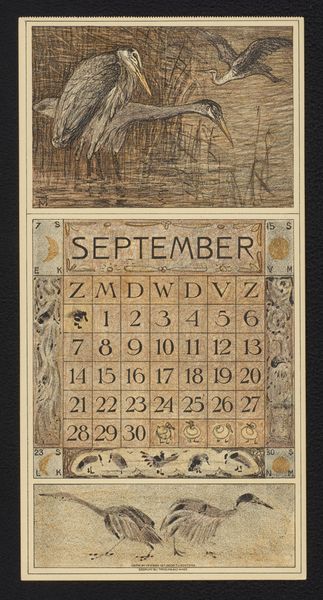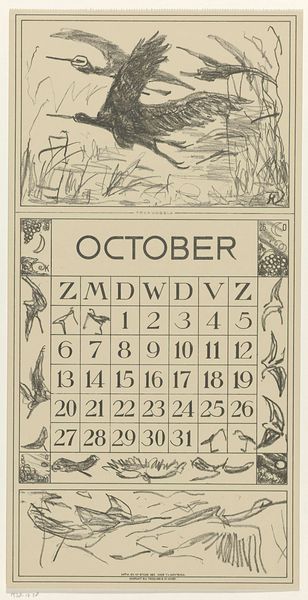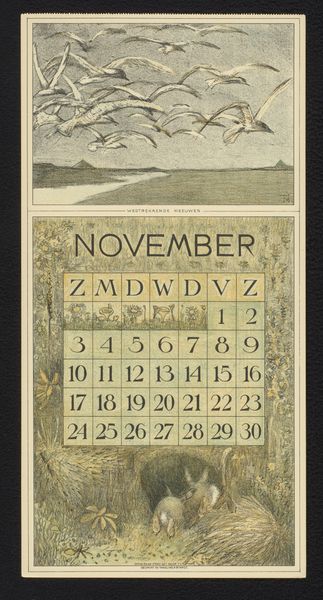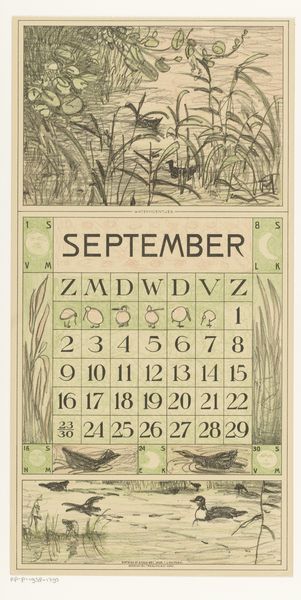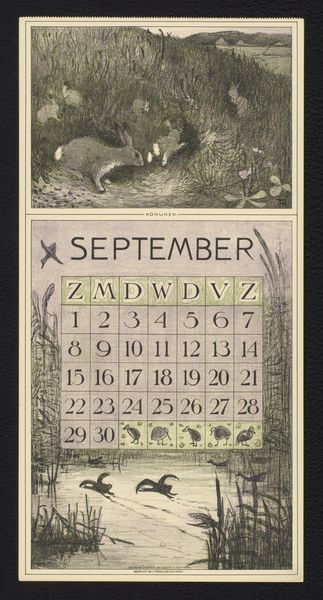
drawing, print
#
drawing
#
art-nouveau
# print
#
landscape
#
line
#
symbolism
#
botanical art
Dimensions: height 420 mm, width 210 mm
Copyright: Rijks Museum: Open Domain
Curator: Look at this print—"Kalenderblad oktober met reiger in de regen" by Theo van Hoytema, created in 1913, currently held in the Rijksmuseum. What strikes you most about it? Editor: The graphic quality, immediately. The stark contrasts and that single heron. It's such a melancholy image, evoking the onset of autumn and impending darkness. Curator: Indeed. Hoytema’s work often blended Art Nouveau aesthetics with social commentary. Considering this piece was made as a print, a widely distributed and reproduced medium, what societal roles could it play? Editor: Mass-produced art like this challenged traditional ideas about art’s value. It democratized access, placing imagery—and therefore, ideas—into ordinary homes, not just the galleries. A functional calendar, readily available. Curator: It’s fascinating to think about how such imagery shapes our collective understanding of nature and time. The line work too—there’s a sense of precision combined with this evocative moodiness. And what about the material aspect? We're seeing paper and ink used to create something both decorative and practical. Editor: Right. The use of the line creates texture. Looking closer, you can discern varying densities and directional strokes, which create depth. Also, a calendar isn't a typical museum piece, is it? How institutions elevate everyday items impacts how we value labor and utility. Curator: Absolutely. These prints likely weren't considered 'high art' at the time, blurring the lines between craft, design, and art in a rapidly industrializing world. Did it carry a certain politics of accessibility? Editor: Potentially, offering imagery outside traditional elite art spaces, helping shape perceptions and fostering cultural narratives among broader audiences. Something available and in use throughout a single month, over and over. Curator: It is really fascinating. Looking at this, I can’t help but consider the tension it encapsulates. Editor: I’m left considering the layers of context Hoytema’s image operates within.
Comments
No comments
Be the first to comment and join the conversation on the ultimate creative platform.
